Silicon for Beam Splitter for a 117 um Wavelength
A university professor requested a quote for the following:
I'm interested in a 4" diameter piece of float zone or high resistivity Si. I'd need both sides polished but I'm not certain on the thickness yet. What range of thickness can you supply and do you have an estimate for what these would cost? The batch size would be low, less than 5 probably as it is for research and not production.
I'm actually interested in the wafers for a possible beam splitter for a 117 um wavelength system I work on. I'm not a specialist in Silicon. It may take me a little bit of back and forth to get this figured out in terms of the classification of Si I'm after beyond just high resistivity float zone.
Silicon wafer are used as beam splitter in the THz range.
Reference #122872 for specs and pricing.
Get Your Quote FAST! Buy Online and Start Your Research Today!
ITO Wafers for THz/visible beam splitter
A physics department lab manager requested the follwoing quote.
I work in a physics lab at Boston College and was interested in ordering some of your ITO coated glass substrates. My intention was to use it as a THz/visible beam splitter (i.e. to reflect the broadband THz radiation from 0.1 - 2 THz and transmit visible light at 460 nm). I see that you have a few different ITO resistivities and substrate thicknesses available - do you think there is an optimal resistivity for my particular use? Let me know if you have any insight, thank you so much for all your help.
Reference #161725 for specs and pricing.
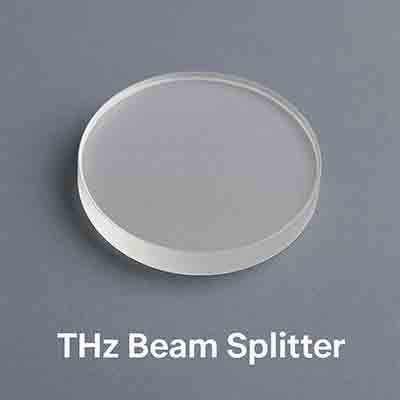
Float Zone Silicon Used as a Beam Splitter
A researcher in a terahertz laboratory requested the following quote:
HRFZ-Si wafer, thickness 4mm, to be used in Michelson interferometer as a THz beam splitter (50-50)
Reference # 273900 for specs and pricing.
Before You Request a Quote or Buy
Our beam splitter substrates are fabricated from ultra-flat sapphire and silicon wafers, ideal for high-performance applications in terahertz, infrared, and visible-light systems. All wafers are available in standard and custom diameters and thicknesses.
- Diameter options: 1", 2", 4", 6"+
- Thickness: 100–1000 μm (custom available)
- Surface finish: Single- or double-side polished
- Applications: THz beam splitters, interferometry, spectroscopy, optical imaging
- Transmission range: 0.1–10 THz (depending on material)
For fast processing, please include desired specs, quantity, and timeline in your request. We offer research discounts and bulk pricing.
What is a Beam Splitter?
A beam splitter is an optical device that divides a beam of light into two or more separate beams. It is a crucial component in many optical systems and can be designed to split the light beam by intensity, wavelength, polarization, or phase.
Types of Beam Splitters:
| Cube Beam Splitters: These are made from two right-angle prisms that are glued together at their hypotenuse faces. The interface is coated with a partially reflective coating, which splits the light beam into two beams with specific intensity ratios. |
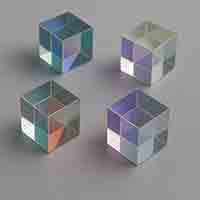 |
| Plate Beam Splitters: Consist of a thin, flat glass substrate with a partially reflective coating. The light beam is split as it passes through the plate, creating a reflected beam and a transmitted beam. |
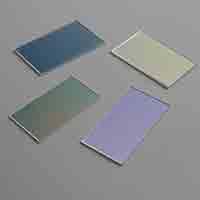 |
| Polarizing Beam Splitters: Designed to split light beams based on their polarization states. These can separate the s-polarized light from the p-polarized light, directing them in different directions. |
 |
| Non-Polarizing Beam Splitters: These aim to split the light beam without regard to its polarization state, maintaining the same polarization characteristics in both output beams. |
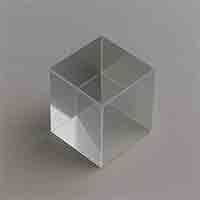 |
| Dichroic Beam Splitters: Also known as dichroic mirrors, these split light based on wavelength, reflecting certain wavelengths while transmitting others. They are often used in applications requiring wavelength separation, such as fluorescence microscopy. |
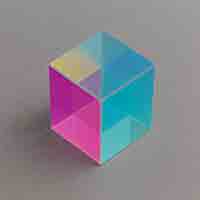 |
Applications of Beam Splitters:
-
Interferometry: Used in devices like Michelson and Mach-Zehnder interferometers to split and  recombine light beams for interference measurements.
recombine light beams for interference measurements.
-
Optical Coherence Tomography (OCT): Employed in medical imaging to split light for depth-resolved imaging of tissues.
-
Laser Systems: In laser-based systems, beam splitters direct portions of the laser beam to different parts of the system or combine beams from different lasers.
-
Spectroscopy: Utilized in spectrometers to direct light to different optical paths for analysis.
-
Telecommunications: In fiber optic communications, beam splitters are used to split and combine optical signals.
-
Photography and Videography: In cameras and projectors, beam splitters are used in viewfinders and for splitting light paths in 3D imaging systems.
Key Characteristics:
- Transmission and Reflection Ratios: Defines the proportion of light that is transmitted through and reflected by the beam splitter.
- Wavelength Range: The range of wavelengths over which the beam splitter operates effectively.
- Polarization Dependence: Whether the beam splitter's performance varies with the polarization state of the incident light.
- Optical Coatings: Specialized coatings that determine the beam splitter's reflective and transmissive properties.
Beam splitters are essential components in many optical systems, enabling precise control and manipulation of light for a wide range of scientific, medical, and industrial applications.






 recombine light beams for interference measurements.
recombine light beams for interference measurements.